Monkey Puzzle, the tree that outlasted the dinosaurs but might not survive humankind
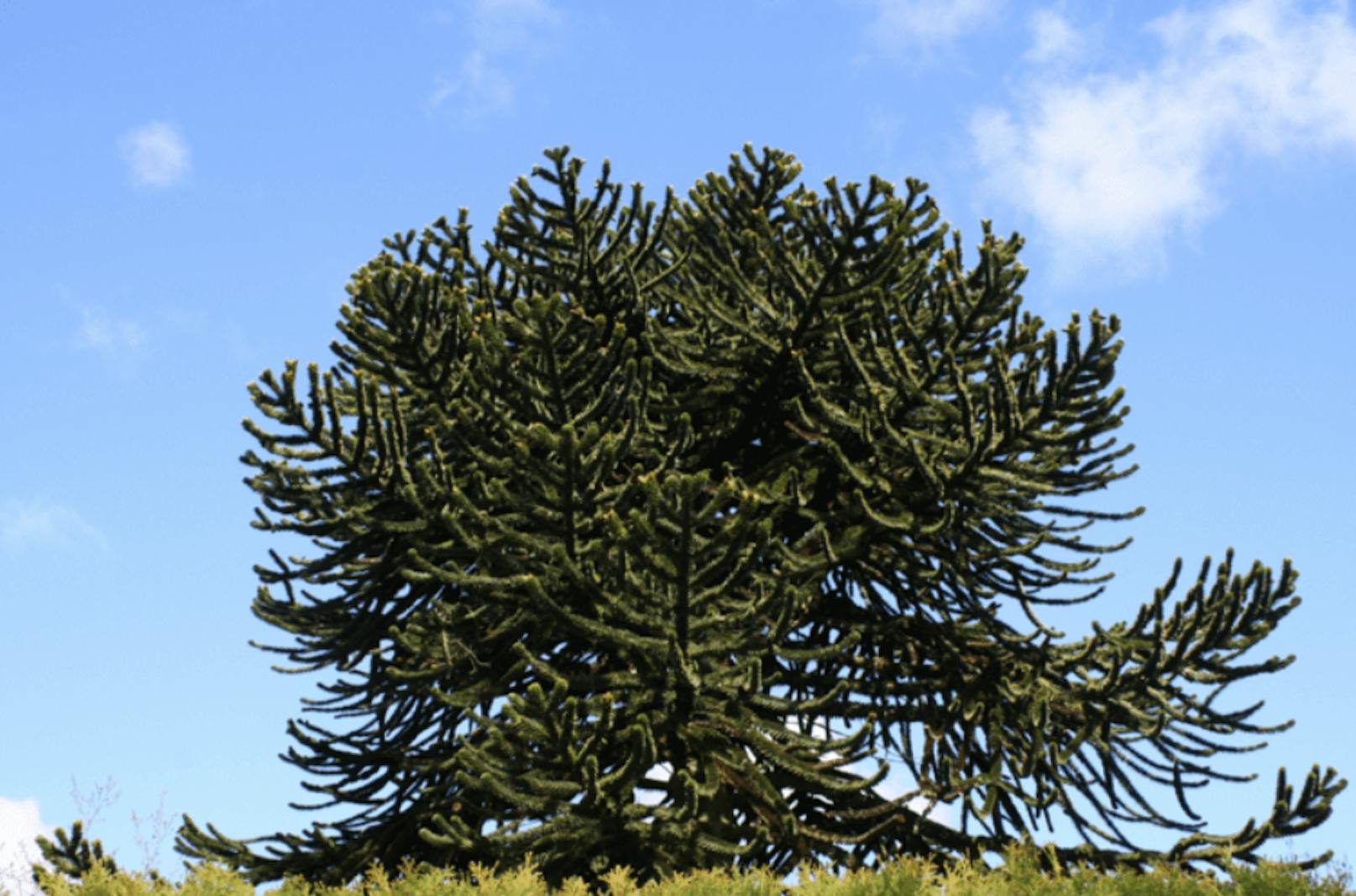
NAME
Monkey Puzzle (Araucaria araucana)
ORIGINS & HABITAT
Monkey puzzle is native to central and southern Chile and western Argentina1, growing to the foothills of the Andes and occasionally along the coast. This is a volcanic region as well as an area prone to lightning, so trees have adapted by growing a thick bark, giving them an advantage over other competitors when fire threatens- they can even survive lava flows2!
The species has been around for 200 million years when dinosaurs still roamed the earth. Its spine-like needles acted as protection from ancient grazing animals.
LONGEVITY
Up to 1,300 years.
HEIGHT
40- 50cm (150–164 ft).
TREE CHARACTERISTICS
The Monkey Puzzle is a tall, evergreen conifer with a reptilian appearance due to its armour of sharp leaves, which very needed to fend off herbivorous dinosaurs. Groups of branches grow from single points on the trunk, curling and dividing like pipe-cleaners. The leaves are green, spiky, stiff, leathery, glossy and triangular-shaped. They are thick and broad at the base, sharp at the edges and tips3. The Monkey Puzzle keeps its leaves year-round.
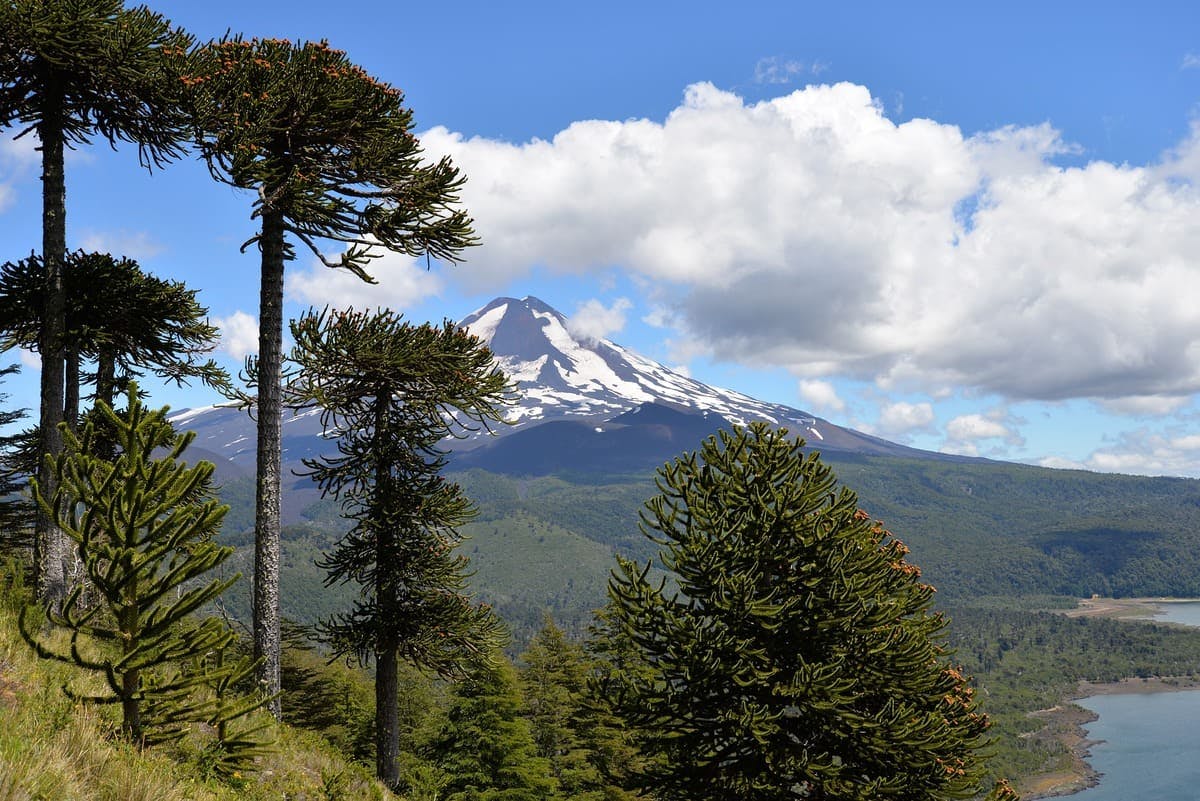
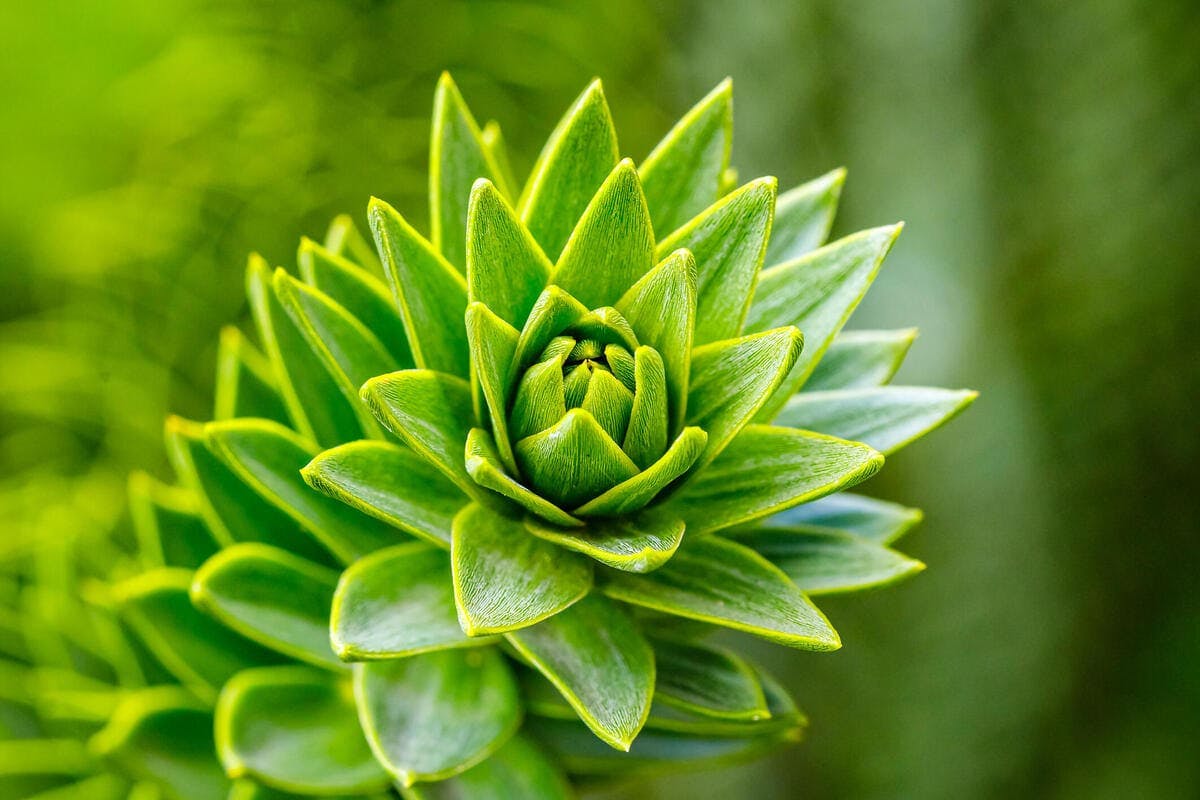
Young trees are pyramidal, but as they mature, they shed their lower branches, so older trees have trunks that are unusually tall and straight for mountain species, with their base resembling an elephant’s foot.
The seeds look like rust-orange cones, and they are dispersed by rodents that hide them in their burrows as well as by parakeets.
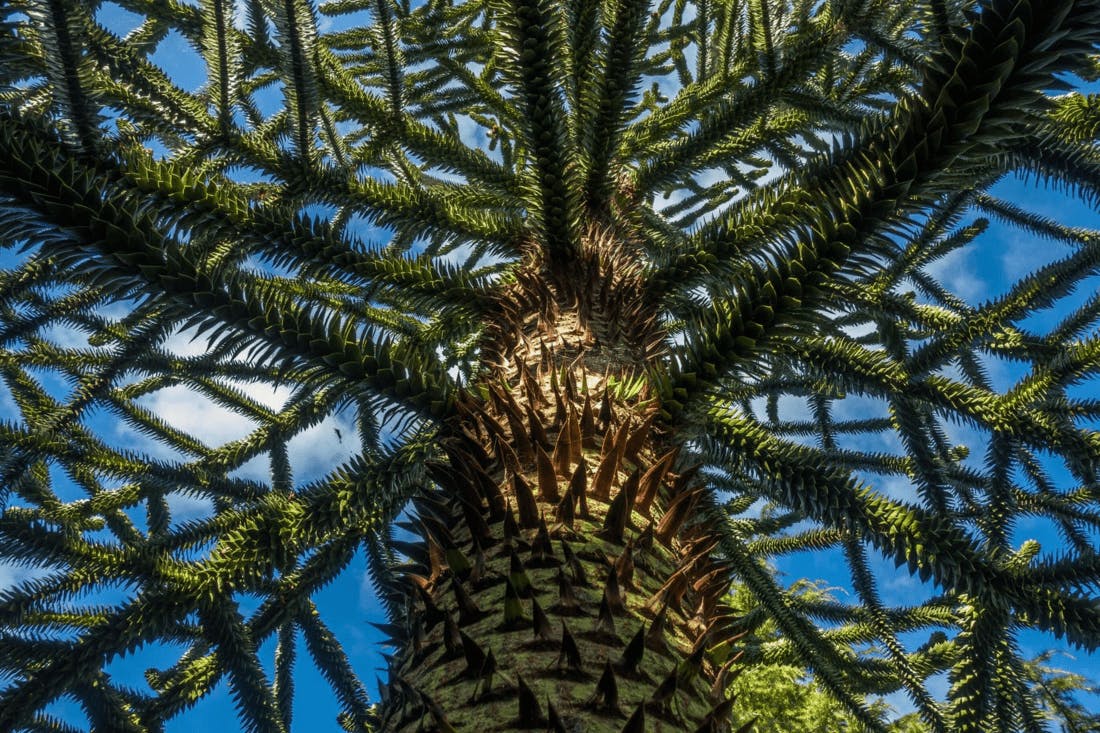
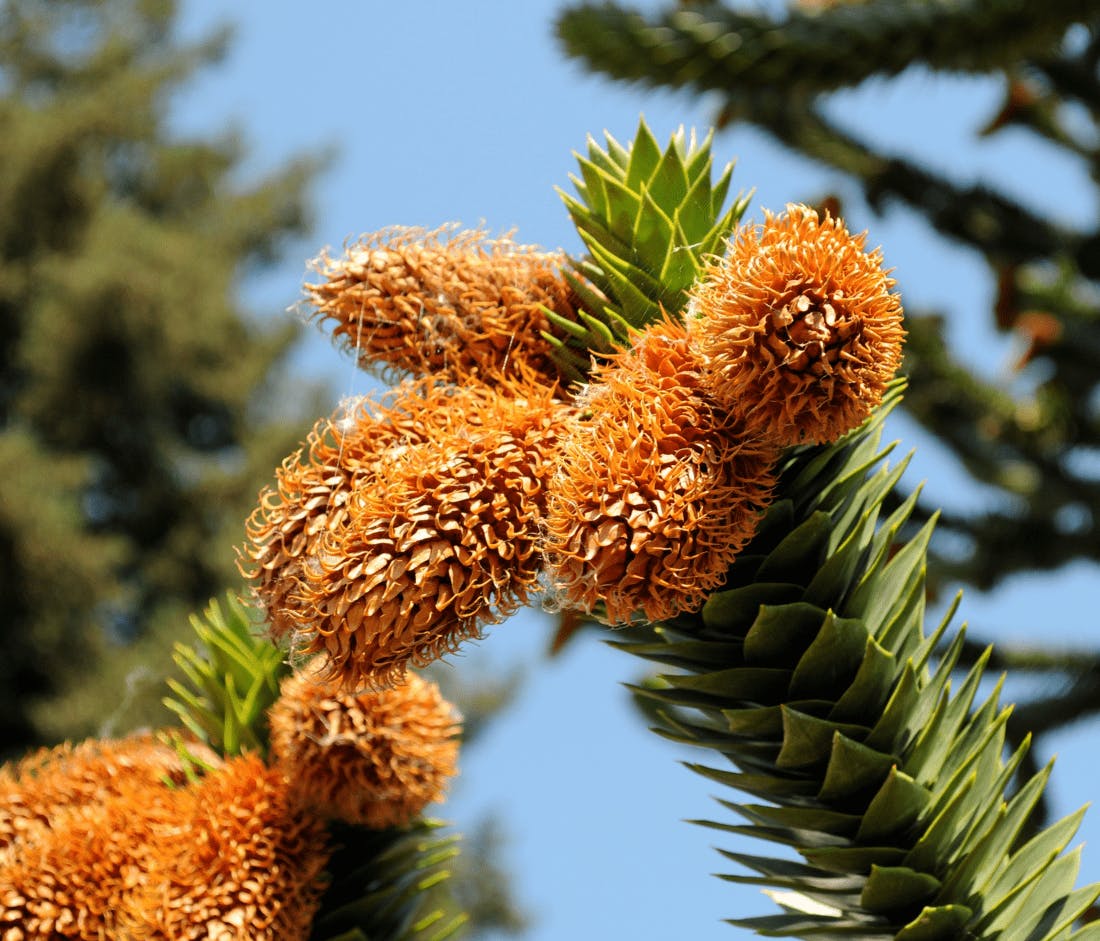
TREE HISTORY & BENEFITS
The local name for this species of Araucaria is Pehuén. For centuries, its protein-rich seeds, the piñones, have been an important part of the diet and culture of the indigenous Mapuche tribes. For example, piñones are eaten roasted or fermented into a kind of beer called muday. In addition, Araucaria has a religious and economic significance for the Mapuche community, used in local harvest and fertility ceremonies.
This species was first discovered by a Spanish explorer around 1780 and introduced to England by Archibald Menzies, a plant collector and surgeon on Captain George’s Vancouver’s circumnavigation of the globe in 17955. The seeds germinated on board, and he returned to England with several of these plants. One of them could be seen at Kew.
The origin of the name Monkey Puzzle is British, from around 1850 when the species was still very rare. It seems to have emerged when a guest visiting a garden in Cornwall commented that “it would be a puzzle for money to climb”6. It became very popular during the Victorian and Edwardian era and is now widely planted as an ornamental in parks and gardens7.
The Monkey Puzzle is home to the slender-billed parakeet and over 70 species of endemic insects8. Unfortunately, in Chile, it’s now an endangered species due to the destruction of its habitat for agriculture purposes as well as the threat of invasive species. So despite it having been declared a protected National Monument, the real challenge now is how to conserve a tree that outlasted the dinosaurs.
References
1. Monkey Puzzle, Woodland Trust, Link: https://www.woodlandtrust.org.uk/trees-woods-and-wildlife/british-trees/a-z-of-british-trees/monkey-puzzle/ 2. Monkey Puzzle, Eden Project, Link: https://www.edenproject.com/learn/for-everyone/plant-profiles/monkey-puzzle 3. Monkey Puzzle, Woodland Trust, Link: https://www.woodlandtrust.org.uk/trees-woods-and-wildlife/british-trees/a-z-of-british-trees/monkey-puzzle/ 4. Monkey Puzzle, Woodland Trust, Link: https://www.woodlandtrust.org.uk/trees-woods-and-wildlife/british-trees/a-z-of-british-trees/monkey-puzzle/ 5. Araucaria araucana, Kew Science, Link: http://powo.science.kew.org/taxon/urn:lsid:ipni.org:names:261681-1 6. Monkey Puzzle, Eden Project, Link: https://www.edenproject.com/learn/for-everyone/plant-profiles/monkey-puzzle 7. Monkey Puzzle, Woodland Trust, Link: https://www.woodlandtrust.org.uk/trees-woods-and-wildlife/british-trees/a-z-of-british-trees/monkey-puzzle/ 8. Monkey Puzzle, Woodland Trust, Link: https://www.woodlandtrust.org.uk/trees-woods-and-wildlife/british-trees/a-z-of-british-trees/monkey-puzzle/